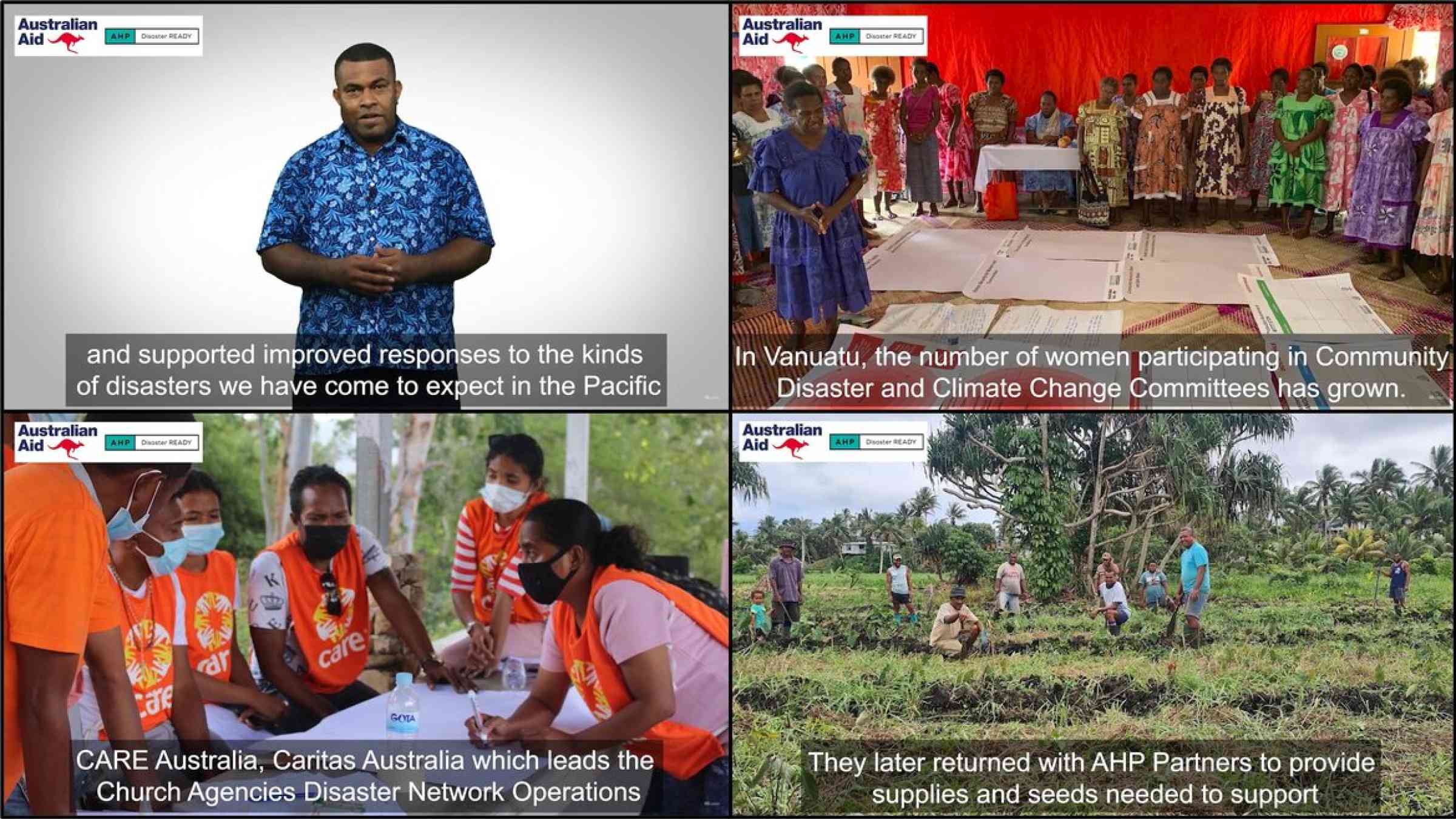GP2022 Ignite Stage: Building the bridge for Pacific resilience through Disaster READY

On 26 May 2022, “Building the bridge for Pacific resilience through Disaster READY” was presented at the Ignite Stage during GP2022.
Disaster READY is a disaster preparedness and resilience program covering Fiji, Vanuatu, Solomon Islands, Papua New Guinea and Timor Leste, which are among the most vulnerable countries to disasters. It is implemented by the Australian Humanitarian Partnership led by six Australian NGOs in partnership with the Australian Government: CAN DO under the lead of Caritas Australia, CARE, Oxfam Australia, PLAN International, Save the Children Australia and World Vision.
Mr. Josefa Lalabalavu of Plan International discussed the progress and achievements of the 1st phase of implementation. Country coordination committees were created comprised of representatives from NGOs, CSOs, inclusion partners, and governments. The localised and inclusive committees proved to be invaluable in conducting disaster preparedness and response efforts in the face of disasters and other crises, including COVID-19. Challenges and lessons learned were also shared as the program embarks on its 2nd phase of implementation. This is one of the commitments in the SFVC online platform.
The Sendai Framework Voluntary Commitments (SFVC) online platform allows stakeholders to inform the public about their work on DRR. The SFVC online platform is a useful tool to know who is doing what and where for the implementation of the Sendai Framework, which could foster potential collaboration among stakeholders. All stakeholders (private sector, civil society organizations, academia, media, local governments, etc.) working on DRR can submit their commitments and report on their progress and deliverables. Good practices and achievements will be highlighted through the online platform.